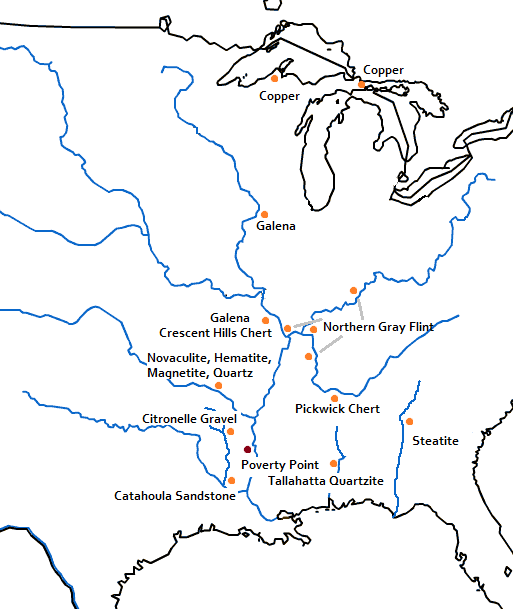Poverty Point
Located in northeast Louisiana, the monumental earthworks of Poverty Point date between 1700 B.C. and 1100 B.C. The site is one of the earliest earthwork sites in the Americas.
Noted archaeologist James Ford published with Clarence Webb the original side report in 1956. The most numerous artifacts discovered were baked clay objects, known as Poverty Point Objects or PPOs. Also discovered were projectile points, tubular pipes, pendants, beads and plummets which were used as weights for fishing nets. Dr. Webb believed that the culture developed a strong microflint industry by using local gravel as cores to make tools for scraping, cutting, sawing, engraving and polishing. The artifacts show that the Poverty Point people were members of an extensive trade network. As can be seen in the map on the right, items found at the site were transported from as far away as the Great Lakes.
In 1958, the staff of the Louisiana State Exhibit Museum constructed the Poverty Point diorama using Ford and Webb’s research. Some of the artifacts discovered by Webb, a Shreveport native, remained at the museum and are displayed today in the Clarence H. and Dorthy Dodd Webb Native American Gallery.
In 2014, Poverty Point was named a UNESCO World Heritage Site. Explore the mounds of the Poverty Point site in detail here.



